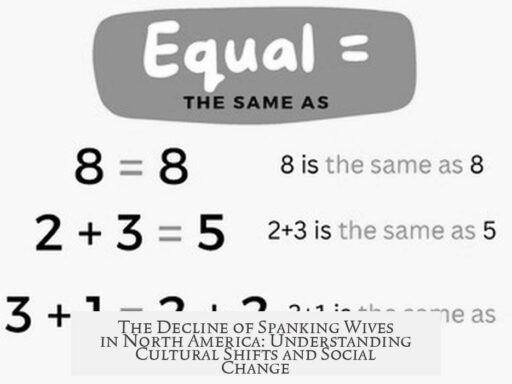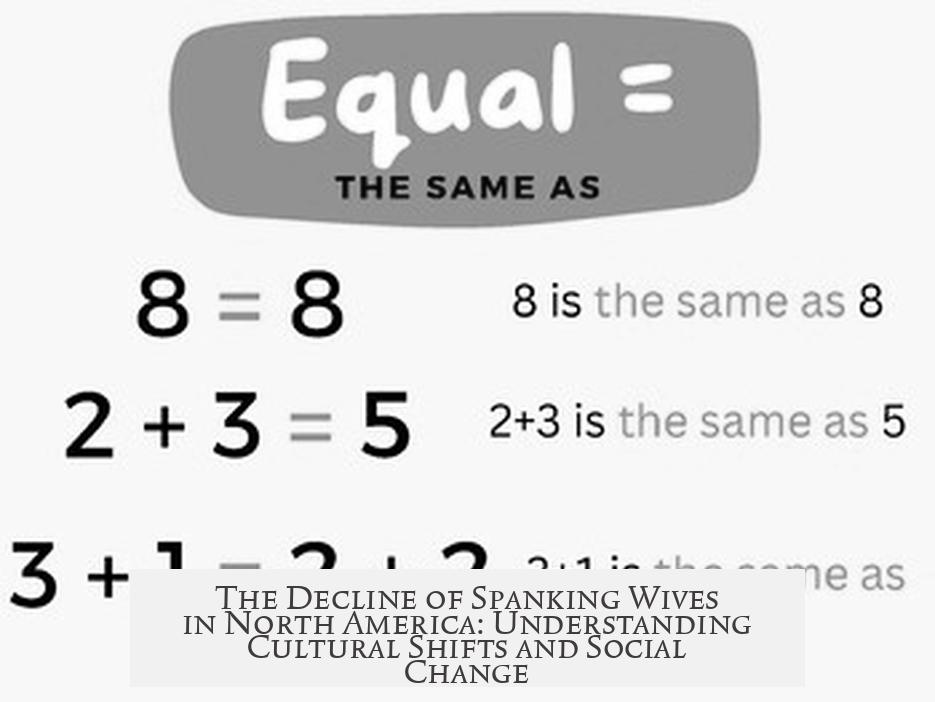Spanking a wife stopped being an acceptable and common practice in North America primarily after the 1950s as social attitudes evolved and awareness of domestic abuse grew. In the mid-20th century, wife-spanking was more a cultural trope presented in media than a widespread real-life behavior. Television shows like I Love Lucy portrayed such acts humorously, using them as exaggerated jokes about marriage dynamics rather than promoting them as normal conduct.

During the 1950s and earlier, the depiction of spanking a wife often served as a symbol of “taming” a spirited woman. These portrayals were not endorsements but cultural markers reflecting gender norms of the time. Such acts functioned as comedic devices rather than sincere representations of acceptable marital discipline.
However, these media depictions obscured the true severity of spousal abuse. In public discourse, references to wife-spanking sometimes trivialized or dismissed cases of serious domestic violence. This minimization delayed necessary legal and cultural interventions for victims of abuse.

The shift away from viewing wife-spanking as acceptable coincided with the rise of the women’s rights movement and increased focus on domestic abuse starting in the 1960s and 1970s. Legal reforms began redefining spousal abuse as a criminal matter, not a private marital issue. These changes helped erode the trope’s social acceptability even if it lingered in certain cultural references.
The transition occurred gradually as media outlets stopped using wife-spanking as humor and societal norms emphasized respect and equality within marriage. By the late 20th century, spanking a wife was no longer a tolerated or common practice in North America.
- In the 1950s, wife-spanking was mainly a media trope, not a real common practice.
- Media often used it humorously, masking underlying societal tolerance for spousal abuse.
- Growing awareness and women’s rights activism reduced tolerance for domestic violence from the 1960s onward.
- Legal reforms and changing social norms ended wife-spanking’s acceptability in marriage.
When and How Did Spanking Your Wife Stop Being an Acceptable and Common Practice in North America?
Spanking a wife in North America was never truly a common or socially accepted practice but lived mostly in the realm of mid-20th-century cultural tropes and media portrayals. Its decline in acceptability closely follows shifting societal views on marriage, gender roles, and domestic violence, particularly from the 1950s onward.
Let’s unpack this fascinating, if uncomfortable, piece of cultural history. Why did spanking wives show up on your favorite old TV shows? And when did the laughter stop, turning into serious reflection on domestic abuse?
Spanking Wives: More Fiction Than Fact
Back in the 1950s and earlier, spanking your wife was depicted often—but mostly in entertainment. It was a cultural trope, not a lifestyle. Men “taming” spirited women through a swat was a storyline device, a sign of marital dynamics exaggerated for laughs or dramatic effect.
Think about popular shows like I Love Lucy. In some episodes, Ricky would end up spanking Lucy. This is jarring by today’s standards, but back then, it was a common punchline—intended humorously, not as an endorsement of real spousal discipline.
The portrayal paints spanking as a quirky marital habit, more absurdity than reality. But don’t be fooled—although these jokes were accepted on screen, they didn’t reflect widespread domestic norms. Instead, they mirrored and reinforced very outdated gender roles and power imbalances.
Laughing Through Denial: Media as a Mirror and a Mask
This media portrayal did one tricky thing: it minimized serious domestic violence. By trivializing wife-spanking through humor, the culture at large found a way to dismiss or downplay abuse. Imagine that—glaring red flags ignored because the media framed them as funny or normal.
Reports of real abuse might get undermined by references to this trope. If “Ricky spanks Lucy” made everyone chuckle, how seriously could society take a story of genuine harm? This framing kept many from recognizing domestic abuse as a grave issue.
So, while spanking was far from a broad “accepted practice,” the normalization of this trope in media served to cloud public perception and delay reforms.
The Tipping Point: When Did the Joke Stop Being Funny?
The cultural shift away from tolerance of any form of spousal discipline, including spanking, occurred gradually but decisively after the 1950s. The rise of women’s rights movements and increased awareness about domestic violence in the 1960s and 1970s pushed society to question old norms.
As more women spoke out about abuse and laws began to change, the media started to evolve. The trope of spanking wives as a comic beat became less common, replaced by more serious depictions of marriage and abuse.
The trajectory isn’t a straight shot. Change came with social activism, better legal protections, and growing public consciousness about equality and human rights. Spanking wives went from a “joke” or trope to a symbol of oppressive domestic violence—something no longer acceptable to portray lightly.
What Does This Mean Today?
Today, spanking a spouse would be outright unacceptable and, frankly, absurd to consider as anything but abuse. It’s illegal, socially condemned, and recognized as a symptom of deeper problems in relationships.
The lingering legacy of the mid-century trope remains a cautionary tale on how media can shape—and distort—societal views. It also highlights why critical reflection on cultural narratives is important, especially those that mask or minimize harm.
Practical Takeaways and Reflections
- Understand the difference: The mid-20th-century media trope of spanking wives was often a fictional exaggeration, not evidence of widespread real-world acceptability.
- Recognize harmful narratives: Even comedic portrayals can perpetuate minimization of serious abuse and delay social progress.
- Celebrate progress: The shift away from such tropes aligns with real-world legal protections and cultural respect for partners.
- Stay vigilant: Even today, subtle normalization of controlling behavior can appear in cultural content. Awareness helps prevent backsliding.
Imagine what marriage advice would look like if history rewound and showed spanking as acceptable today. No thanks! Thankfully, society has moved on from those mythic “swat to tame” days.
So next time you watch a rerun of classic TV, remember: those spanking jokes reflect a past mindset. The good news? North America’s collective values on partnership and respect have made spanking your wife laughably outdated—and rightly so.
Does that make you reconsider how humor and media influence social norms? How many other harmful “jokes” have lingered too long? Food for thought.




